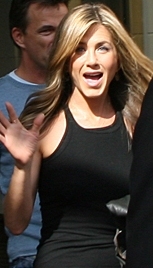We know more about the early visual cortex than about any other brain area. This is because neurons in the early visual cortex are delightfully predictable. For example, a neuron may respond optimally to a bar of light of a particular width and orientation: If an observer sees such a bar of light, the neuron will start to fire. In order to fully characterize this neuron, all you need to do is systematically try out a lot of different widths and orientations and see which combination works best. This may be a lot of work and requires a highly invasive procedure (i.e., opening up the observer's skull and sticking electrodes into the brain), but it's definitely within the realm of possibility. (If you're interested, you may enjoy the paper by Wurtz (2009), in which he describes the seminal contribution of Hubel and Wiesel to the understanding of the early visual cortex.)

But, of course, researchers want to go beyond the early visual cortex. After all, neurons that “like” titled bars of light don't tell us much about what we really want to know, such as how we are able to recognize things. Unfortunately, it has proven very difficult to characterize more complex neurons. This does not mean that it's difficult to elicit a response from these neurons, not at all. But it's difficult to figure out exactly what it is about a certain stimulus that makes a neuron respond. For example, in a famous study, Quiroga and colleagues (2005) found an individual neuron that responded to the face of Jenifer Aniston, but not to a picture of the Sydney opera house. Since this neuron is surely not a Jenifer Aniston detector, photos of Jenifer Aniston must have some underlying feature that is not shared by the Sydney opera house. But what feature? The best you can do is make a reasonable guess, such as that the neuron responds to female faces, perhaps even only celebrities (it seems awfully specific, but who knows?). But alas, Julia Roberts failed to excite the neuron.
 This is where a clever new approach comes in, developed by Carlson and colleagues (2011). Instead of blindly trying out different shapes, to see which shape best excites a particular neuron, they used an evolutionary algorithm. They started out by presenting a few random shapes and determining the “winner” (i.e., the shape which elicited the largest response). Next, they generated a new set of shapes, mostly consisting of slight variations on the winner of the previous generation. Again, they determined a winner and used it to generate a third generation of shapes. And so forth, until the neuron appeared to be maximally excited, at which the point the algorithm terminated and a definitive winner was chosen (they may have used a different criterion for termination, I'm not sure, but it doesn't really matter). By repeating this evolutionary algorithm over and over they built a set of shapes that all shared that special something that was required to drive neurons in V4, the brain area that they were investigating. It turns out that what V4 neurons like best are highly curved shapes. This may not seem like much of a finding (and I agree that the methodology is more exciting than the results), but it actually fits very nicely with theories on object recognition. Object-contours consist mostly of gentle curves and straight lines, but looking at the highly curved parts is the best way to identify an object. This makes intuitive sense, I think, but Carlson and colleagues showed this in a simulation as well.
This is where a clever new approach comes in, developed by Carlson and colleagues (2011). Instead of blindly trying out different shapes, to see which shape best excites a particular neuron, they used an evolutionary algorithm. They started out by presenting a few random shapes and determining the “winner” (i.e., the shape which elicited the largest response). Next, they generated a new set of shapes, mostly consisting of slight variations on the winner of the previous generation. Again, they determined a winner and used it to generate a third generation of shapes. And so forth, until the neuron appeared to be maximally excited, at which the point the algorithm terminated and a definitive winner was chosen (they may have used a different criterion for termination, I'm not sure, but it doesn't really matter). By repeating this evolutionary algorithm over and over they built a set of shapes that all shared that special something that was required to drive neurons in V4, the brain area that they were investigating. It turns out that what V4 neurons like best are highly curved shapes. This may not seem like much of a finding (and I agree that the methodology is more exciting than the results), but it actually fits very nicely with theories on object recognition. Object-contours consist mostly of gentle curves and straight lines, but looking at the highly curved parts is the best way to identify an object. This makes intuitive sense, I think, but Carlson and colleagues showed this in a simulation as well.
To wrap it up, I think that Carlson and colleagues have shown very elegantly that an evolutionary algorithm is a powerful tool for neuroscience. And I would personally love to see a follow-up on the “Jenifer Aniston study" where they combine an evolutionary approach with a face warping technique.
Images taken from Wikimedia Commons [1] [2].
References
Carlson, E. T., Rasquinha, R. J., Zhang, K., & Connor, C. E. (2011). A sparse object coding scheme in area V4. Current Biology, 21(4), 288-293.
Quiroga, R. Q., Reddy, L., Kreiman, G., Koch, C., & Fried, I. (2005). Invariant visual representation by single neurons in the human brain. Nature, 435(7045), 1102–1107.
Wurtz, R. H. (2009). Recounting the impact of Hubel and Wiesel. The Journal of Physiology, 587(12), 2817-2823.



